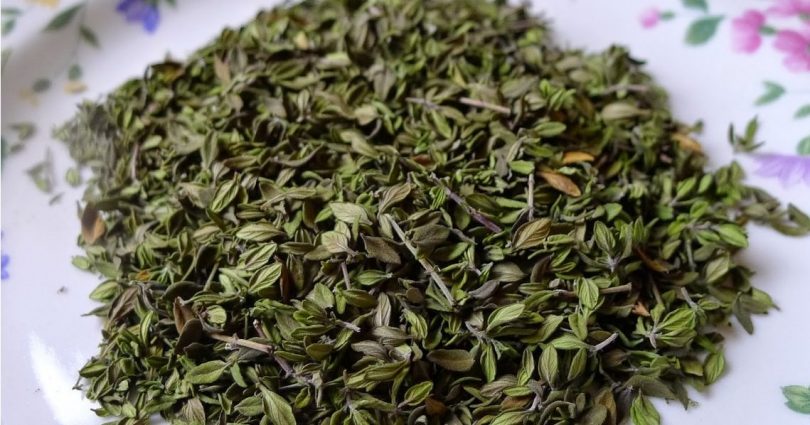Thyme is an herb that’s known for its aromatic flavor that’s why it’s used in many ways, such as cooking, bathing, and even for therapeutic purposes. It’s also easy to grow so as long as it’s planted in areas wherein it can get a good dose of warm love from the sun.
In case you have one growing at home, you might want to cut some of its leaves and start using it in your recipes. What about the rest of its leaves? You can’t simply let it go to waste, right? Luckily, there are many ways to dry its leaves so you can store it away for future use, or make a profit by selling them.
Before we talk about drying thyme, it would be best to first know how to harvest this herb for optimal results.
How to harvest thyme the right way
Harvesting thyme isn’t as simple as cutting the leaves off the plant, there’s a proper way to do it. First, cut a stem from the plant itself just before its nodes bloom.
Experts say that the best time to do so is in the morning after the dew has dried.
Pinch the stem and then pull it between your fingers; this will easily separate the thin leaves from the stem. Some people like to add a little bit of stem in their recipes, but that’s up to you.
Discard the main stem and wash the leaves and remove the excess water. You can then chop up the leaves or leave them as is when you dry them.
Simple Methods of Drying Thyme at Home
There are several methods for drying thyme at home.
Hang dry
- Tie the stems all together with a string and hang the bundle upside-down from an elevated place.
- Hang the thyme bundles in a room with low humidity. Do not dry the bundles under the sun because doing so will make the leaves lose a lot of their color and flavor.
- You can also place a small bag underneath to catch the dry leaves that fall. Make sure it has a few holes around the top to allow air to pass.
The good thing about this process is that you don’t need any fancy equipment, saving you a bit of cash. However, the process may take around one to two weeks.
Drying on paper towels
If you don’t have that much time and a little bit of change to spare, you can place the leaves on a sheet of parchment paper spread on a cookie sheet.
Shake it every 12 hours and the leaves will be dry in a couple of days. It’s a faster method of drying thyme and with a minimal cost.
Drying thyme in the dehydrator
An even faster alternative of drying thyme would be using a food dehydrator. Not only does it dry the leaves faster, it can even prevent molds from growing while drying. With the right temperature set, you can dry the leaves in less than a day (usually it takes about 6 to 12 hours to dehydrate thyme).
You’ll know that it’s ready when the leaves easily crumble.
Yes, a food dehydrator may be expensive but it is very handy especially for those who need to dry leaves quickly.
READ ALSO: Which Food Dehydrator is Right for You
Drying thyme in the microwave
In the event that you’re in a real rush to get dry thyme, you can use the microwave.
- Place the leaves in a microwaveable container and replace the lid. Make sure that the seal is airtight.
- Turn on the microwave and blast the thyme leaves on high heat for 30 seconds. Check the eaves and repeat the process.
- If after one minute the leaves aren’t dry, you can nuke them again on high for another thirty seconds, continue heating the leaves in the microwave using thirty-second bursts until the thyme is dry enough to your liking.
When you do choose to use the microwave, it is advisable that you check on the leaves constantly.
f you see small wisps of smoke coming out of the thyme leaves, you need to stop immediately.
Drying thyme isn’t that hard, and now that the leaves are dry, it’s time you used or store them for future use. If it’s the latter, here are a few ways to do it correctly and save its flavor for later.
How to store dried thyme
Store dried thyme in airtight containers such as re-sealable bags or plastic containers with air-tight lids. If you don’t like using plastic, glass jars that have covers with rubber seals will do the trick.
Hide it from the sun
Do not place the container under direct sunlight. Why? Exposing the already dried out herb to sunlight will cause the leaves to lose their potent flavor. You need to use dark-colored jars or opaque containers to block out the sun’s rays.
Stay cool and dry
You can place the container in a cool and dry area like a cellar or a cupboard. You can also place the thyme in the vegetable storage space in your refrigerator; however, you need to make sure that the leaves are in an air-tight container to prevent the humidity from getting in contact with the dried leaves. Placing the thyme in the refrigerator will extend its shelf life.
When stored properly, dried thyme will be good for a year or two; that is, if you haven’t used it all up before then. Label the container with the time and date it was dried and stored so that you have an idea when to replace with freshly-dried leaves.
Herbs will last longer and have a stronger flavor when it is stored whole.
So think before you chop, if you need the leaves right away and might use it frequently then by all means grind it or chop it to smaller pieces before storing it. But if you don’t see yourself using as much as you’ve harvested, maybe it would be a better idea to store it whole.
Congratulations! You now know how everything that’s needed for drying thyme at home.





